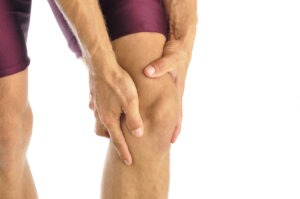 Osteoarthritis (OA) of the knee impacts the cartilage, the bones, and the synovium in the knee joint. Cartilage refers to a slippery tissue that offers a smooth surface for joint movement and acts as a cushion between the bones.
Osteoarthritis (OA) of the knee impacts the cartilage, the bones, and the synovium in the knee joint. Cartilage refers to a slippery tissue that offers a smooth surface for joint movement and acts as a cushion between the bones.
Synovium lines the joints, and it is soft. It generates fluid, known as synovial fluid, which provides lubrication. It also delivers nutrients and oxygen to the cartilage.
When these functions disintegrate, they no longer offer protection to the bones of the knee joint. Consequently, bone damage occurs. Osteoarthritis of the knee can lead to stiffness and pain, and the symptoms become worse over time.
Thomas & Bigler Knee & Shoulder Institute, led by board certified orthopedic surgeons Dr. Steven Thomas and Dr. Gregory Bigler, provides orthopedic surgery to patients in Las Vegas, Nevada, and surrounding locations.
Stages
In osteoarthritis of the knee, the cartilage disintegrates, and bone damage occurs. The pain and stiffness increase as the stage progresses. This condition takes multiple years to develop, and it progresses in stages.
This condition can be challenging to address as the symptoms do not manifest until OA reaches an advanced stage. Individuals with osteoarthritis of the knee should monitor for any changes in symptoms or other signs that the condition is progressing.
Stage 1: Minor
Small lumps of bone known as osteophytes may grow in the knee region, and there may be slight damage. There will be no obvious narrowing of the space between the bones, which can indicate that the cartilage is disintegrating.
Individuals with stage 1 OA are unlikely to experience discomfort or pain. The joint will also look normal on an x-ray.
Stage 2: Mild
In this stage, an individual may begin to notice symptoms. Doctors may be able to see certain indications of wear. X-rays, and other knee joint scans, will clearly indicate more osteophyte growth, and the cartilage will start to thin.
While the space between the bones will still appear to be normal, the region where the tissues and bones connect will start to harden. Upon tissue hardening, the bones will become denser and thicker. A thin bone layer will also develop underneath the cartilage in the joints.
The individual may experience joint pain or stiffness. The region around the knee joint may begin to feel especially uncomfortable and stiff after an individual has been sitting for longer durations.
Stage 3: Moderate
The cartilage damage has progressed, the gap between the bones has narrowed, and x-rays still indicate cartilage loss.
The patient may experience pain and discomfort while undertaking daily activities, such as walking, running, bending, and kneeling. There may be early indications of joint inflammation.
The cartilage will continue to break down and thin as OA progresses. The bones, in turn, will thicken and grow outward to develop lumps.
Stage 4: Severe
The only option for late-stage OA of the knee may be knee replacement surgery. This is the most advanced stage of this condition, and the symptoms are quite apparent. The space between the bones in the joint has continued to become narrow, causing further disintegration of the cartilage.
Consequently, there is joint stiffness, constant inflammation, and less fluid around the joint. In addition, there is more joint friction as well as significant pain and discomfort with motion. Surgical treatment is usually the only option at this stage.
Board certified orthopedic surgeons Dr. Steven Thomas and Dr. Gregory Bigler receive patients from Las Vegas, Nevada, and nearby areas for orthopedic surgery.
If you would like to schedule an appointment or learn more about the Knee and Shoulder Institute procedures & treatments performed by Las Vegas, Nevada board-certified surgeons Steven C. Thomas, MD and Gregory T. Bigler, MD. Contact the office today click here.
